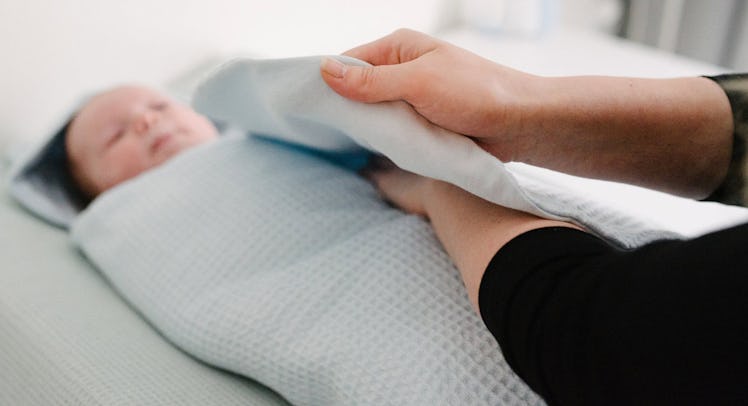Hugsy Blanket Gives Premature Babies the Care They Deserve
Hugsy, a blanket that simulates the feeling and smell of babies' mothers, is now funded and looking to scale up.

New babies need to be held. It lowers their heart rate. It calms them down. It prevents them from screaming bloody murder. One of the most common newborn-holding practices is Kangaroo care, in which mothers and fathers hold a baby against their bare chest. The skin-to-skin contact is helpful for bonding and body regulation. The marsupial maneuver is much more difficult, however, with premature babies as parents can’t hold them for long periods of time. A Dutch startup has just received funding for a blanket that simulates the calming effect of Kangaroo care. Called the Hugsy, the blanket simulates the feeling and smell of a premature baby’s mother.
After birth, parents are encouraged to lay their babies on their chest to familiarize their child with their smell, warmth, and unique heartbeat. The process fosters a stronger bond between mother and child, but when “kangaroo care” cannot be given, babies tend to suffer. Previously, doctors would have to limit interaction between premature babies and their mothers in an effort to keep the newborn safe from harsh elements outside of the incubator. Thanks to Hugsy, there no longer needs to be a compromise between giving premature babies the attention they want and the protection they need.
Invented by Sylvia Claes, a student at the Eindhoven University of Technology, Hugsy consists of a swaddling blanket, openings to let wires run through the incubator, and a heartbeat module. That module pairs with another that captures the mother’s realistic heartbeat and feeds it through to simulate the womb’s comfort.
The recently incorporated company has received $220k from the Leapfunder European investor network and is currently testing and developing new features. As of 2016, the baby care industry was cited to be worth $13.3 billion, and, as Hugsy already has preliminary deals in place with European hospitals, it’s likely they will be taking a considerable share in the near future. All in all, Hugsy is looking to be extremely lucrative once tests wrap up and a definitive date is set on international expansion.
As for a timetable on when Hugsy will come to the U.S., Claes is not overly optimistic. “Moreover, the culture there is much more conservative,” she said in an interview with E52. “Hospitals are busy saving lives, that’s the primary task. Hugsy is ‘soft’ care and gives more comfort. In the Netherlands they are much more open to that, parents are being listened to.”
It’s important to note, however, that the U.S.’s skepticism is justified. The American Association of Pediatrics (AAP) takes a hardline view of home infant health monitoring technology. Largely, their hesitancy is due to a fear that parents will opt to use the products thinking they protect children from Sudden Infant Death Syndrome (SIDS). In their most recent infant sleep guidelines, the AAP notes that there is no evidence that products similar to Hugsy help keep children safe from SIDS. Their fear is that parents using health monitoring devices could develop a false sense of security and become lax when it comes to proven safe sleep recommendations.
Still, Hugsy’s ability to provide comfort to premature babies is inspiring and certainly a help for new parents who want to offer their infants comfort but can’t just yet.
This article was originally published on